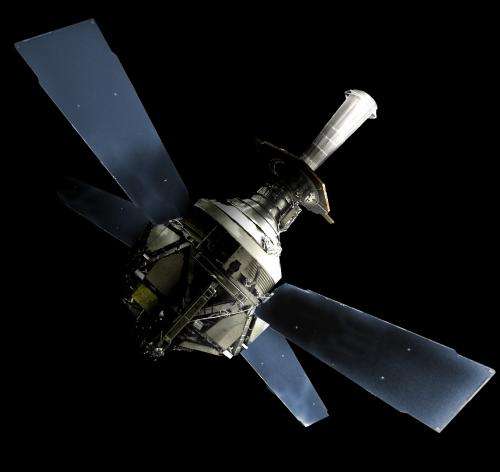Probing gravity

(Phys.org) -- Einstein's theory of relativity is remarkable not only because it is so successful in explaining seemingly bizarre observations (like the bending of starlight) or because it has assembled a coherent picture of nature. One would expect these results from any good theory. Relativity is also amazing because its has shown that the universe behaves in completely non-intuitive ways (at least to humans): time dilates, lengths contract, gravity warps space, and mass and energy are related by E=mc^2. Our so-called "common sense" is sometimes just plain wrong.
It is no wonder, therefore, that astronomers are constantly testing relativity to see whether all of its details are perfectly in order, or if some adjustment might be necessary that might also change our basic understanding of space and time. One of its more curious, non-intuitive predictions is that space is not only warped by the gravity of a massive body - it is also warped (though to a lesser degree) by the rotation of a body, the so-called "frame dragging effect." This particular prediction of relativity is small and extremely hard to measure. How small? The axis of a precessing gyroscope traces a circle that is 360 degrees around. According to Einstein's theory a gyroscope orbiting the Earth (as per the experiment described below) would, because of frame dragging, have its axis precess by 11 millionths of one degree per year -- very tiny indeed.
In 2004, NASA launched the Gravity Probe-B mission, an heroic experiment developed primarily at Stanford University, to test this minuscule but critically important prediction, and a team of CfA astronomers worked on the mission. In 2011, the NASA/Stanford team reported their conclusion: no disagreement with relativity. In a series of seven papers published in this month's Astrophysical Journal Supplement, the many astronomical issues involved with the analysis are presented in detail. In the summary paper, CfA scientists Irwin Shapiro, Daniel Lebach, Michael Ratner, and four colleagues discuss the critical issue of how to measure the tiny predicted precession.
Key to the experiment was a guide star that provided the absolute reference for the spacecraft and its four cryogenically cooled, superconducting "gyroscopes." The experiment team in the planning stages chose the star IM Pegasi because it is bright at both optical and radio wavelengths and is located in a convenient part of the sky for the satellite. Using techniques of ground-based very long baseline radio interferometry referenced to distant quasars, the astronomers began an intensive multi-year program of study of this star's motion in the sky, working from 1997 until 2005. All motions of the star would have to be taken into account in the analysis; an ancillary result would be the distance of the star from Earth.
In their new paper the team reports that the star is located 314. 4 light-years away with an uncertainty of about 2.2 light-years, and that it moves across the sky ("proper motion") at a rate of 34.3 thousandths of an arc-second per year. The new series of papers, and the meticulous discussion of the many astronomical factors that had to be accounted for in the analyses, mark an important stage in the effort to probe Einstein's theory at amazing new levels of precision.
Journal information: Astrophysical Journal Supplement
Provided by Harvard-Smithsonian Center for Astrophysics


















